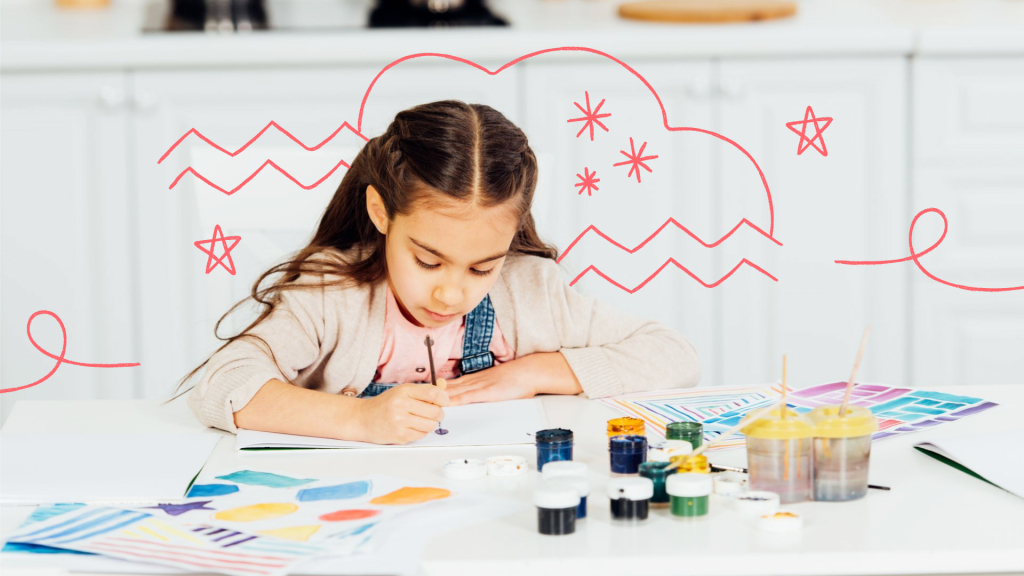
- < 1 min
6 Calming Activities for Kids Prone to Worrying

As a child grows, they begin to experience more and more new things. Each new experience can often bring with it a mix of emotions. It is natural and healthy to feel excitement, anxiety and worry with a new event, challenge or experience. Worry can be helpful, as long as it doesn’t become too overwhelming or persistent. Worry is a way of planning, thinking and feeling ahead. Often questions such as; ‘Am I ready for this? What will it be like? How can I do this?’ will emerge when faced with new experiences. A child can struggle to compartmentalize their thoughts and think constructively about their feelings. If unaddressed, a child’s worries and anxieties may escalate to the worry becoming bigger and fear and dread can emerge.
As a parent, we can help our children think through their worries and prepare for this new experience in a calm, safe way. When a child feels prepared and ready, they are able to focus on the parts of a new experience that they are most excited about.
As a child psychotherapist, I am often faced with big feelings of worry in the therapy room. What I find useful for the children I work with are the following:
Sometimes it can be tricky for children to understand what a worry is or what it looks like. This is where I use a therapeutic approach called: ‘working with the metaphor’.
Children do a lot of their communication through play. If, as a parent, you are noticing some signs that your child could be worried about something; perhaps they’ve lost their appetite, they are not sleeping as well or you know that they will be facing a new challenge or event soon, you can start to help them recognize their worry by using this therapeutic tool at home.
You could use imaginative play as an avenue to help explore the feeling of worry through their toys. Perhaps you’re having a tea party together and you are playing the teddy but you have been feeling a little anxious about coming to the tea party or you weren’t sure about what the other people may think of the cake you brought. Explore how it feels for teddy, in his body; how his tummy feels fluttery, or how his heart can feel like it is racing. Explore that this feeling seems to get bigger and bigger the more you think about it and that teddy just wishes it would go away.
Step out of your role as teddy and be Mom. Speak to teddy. “Teddy, I wonder if it’s like this… for you.” Empathize with teddy, reflect, validate and comfort. Speak with your child. “I wonder if you’ve ever felt this big knot in your tummy before? Mummy does sometimes.” Be patient. In this approach, you have opened up the channel of communication with your child. They may open up and explore with you at that moment. Be patient, give them time and space, listen and educate. Help them understand that worrying is healthy and can be helpful. That talking about it can help it feel less big.
You may find that your child won’t immediately want to think of their worry with you at that moment. Sometimes children need time and space to digest play or they may not have thought about it at all. Allow this and check in with them after a little while. Notice their mood and see what happens.
Sometimes, it can be helpful for an older child to face the worry head-on. As their parent, you know they are transitioning into a new experience, if you feel they will respond effectively, you can ask them about their feelings towards the new event. Wonder with them, using reflective and validating responses. Explore the feeling of worry together through art or play.
Reading a book about a worry can be helpful. Books such as ‘The Huge Bag of Worries’ or ‘Ruby’s Worry’ are really good resources and can be a great metaphorical tool. Explore the feelings in the stories and wonder if your child has ever felt this way.
For some children, it can be so tough to speak openly about their worries. This is where we, as parents, explore it for them. Narrate what you see. Wonder what it could be like for them to worry about this new experience. Empathize and validate their feelings. You being present, available and comforting will instill a sense of safety and trust in them. That alone can be enough to help them open up to you.
Give your child useful resources. Moshi has great breathing and calming tracks to help your child feel relaxed in their minds and body.